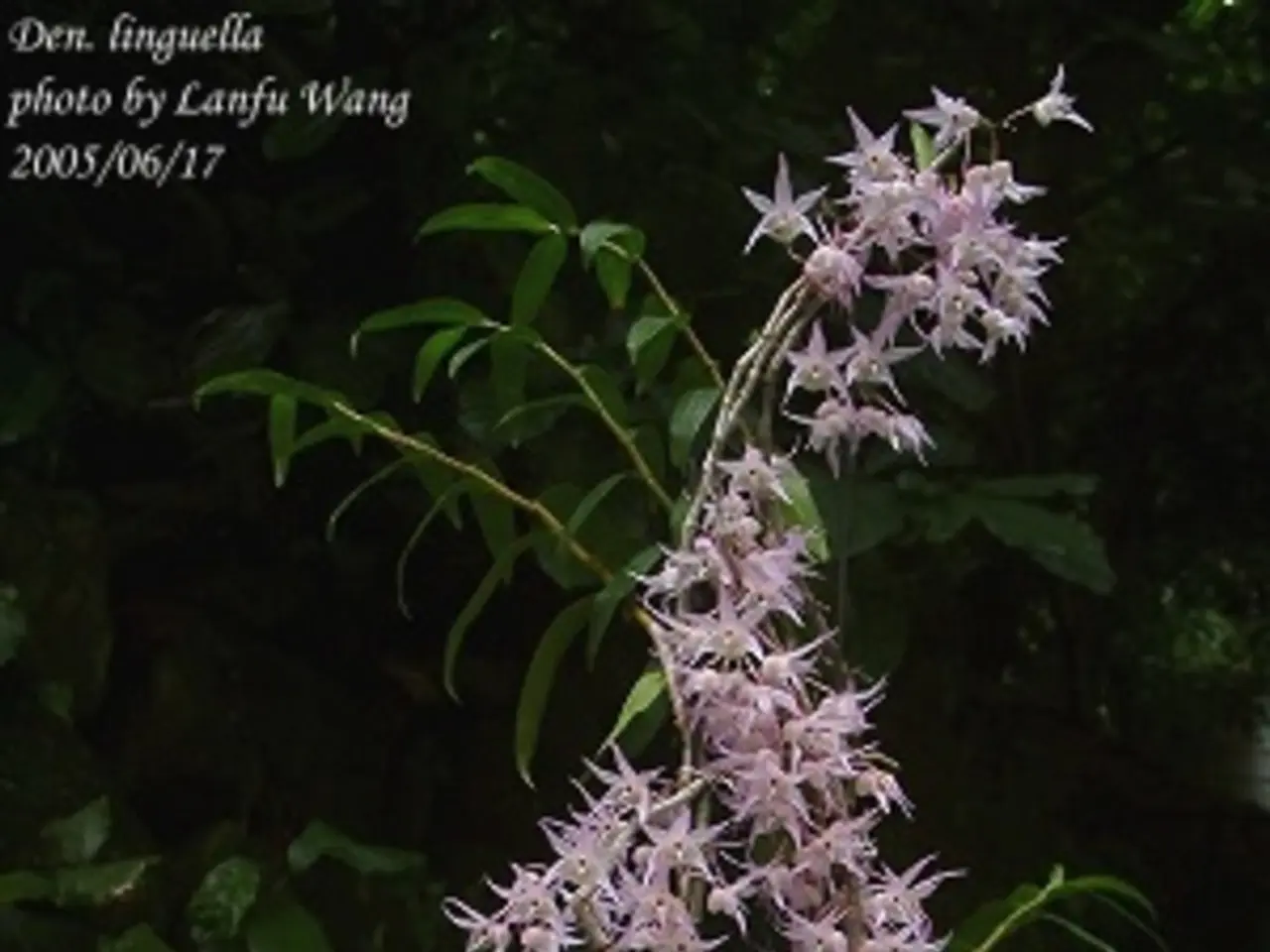Strategies for Cultivating Fuchsias
Fuchsias, named after the German doctor Leonard Fuchs who lived in the early 1500s, are a captivating addition to any garden or indoor space. These beautiful plants, known for their stunning displays, require special care but will reward all efforts by forming lovely new tips of their stems.
Fuchsias are typically purchased in spring, before flowers burst forth from their buds. In March and April, when growth resumes, it's time to start shaping the plant. This is done by pinching back the plant, and the pinched off materials can be used as cuttings.
As we move into summer, most fuchsia varieties are now in full bloom. Withered flowers should be removed to avoid seeding. It's also important to note that aphids, appearing as green insects that make leaves sticky, can be found on the undersides of Fuchsia leaves. To combat this, regular inspections and prompt treatments are necessary.
In July and August, people often prop up fuchsia plants to allow the flowers to hang freely. Pruning is also crucial to keep these plants in a nice shape. Tying can be as important as pruning for fuchsias that flower profusely.
Fuchsias are the most beautiful when kept in rather cool conditions in half shade. Popular varieties include Blue eyes, Swingtime, Pink Cloud, Abundance, Cascade, Hummingbird, Lena, Alba, Dark eyes, Winston Churchill, Aurea, and Paniculata.
The city of Erfurt, Germany, is known for its spectacular fuchsia flower displays, particularly in the egapark, which hosts guided tours featuring extensive collections of fuchsias along with pelargoniums and begonias.
In September and October, prepare plants for winter by bringing them in and cleaning up, removing all the yellow leaves and cutting off the last of the flowers if they aren't fresh. During this period, all indoor varieties should be put in a cool, dry spot as they need rest.
In February, plants which have wintered can be given more water to get growth started, but don't feed yet. Too much warmth and sunshine leads to rapid flower loss and severe evaporation from leaves and stems in fuchsias.
It's essential to provide fuchsias with a period of stable conditions before planting or placing among other plants. Fuchsias can last for years if given this period.
Adriana Copaceanu, a nature lover, gardener, and author of books on lavender and chicken raising, offers valuable insights on caring for fuchsias. She advises pinching back the crown of Fuchsia to ensure the desired bush shape.
To create a tall stemmed Fuchsia plant, remove all side shoots and branches until the desired trunk height is achieved. Leaf drop in the winter may indicate that the plant is too dark or getting too much water.
Almost all the varieties of fuchsia known today come from South and Central America, New Zealand, and Tahiti. It's easy to propagate Fuchsia by pinching back ungainly shoots throughout the summer or in winter.
In May and June, fuchsia plants destined for the garden or the balcony should be re-potted or planted out. Whitefly, small white insects that fly up from the plant when leaves are touched, can be an issue during this time. Regular inspections and prompt treatments are necessary to keep these pests at bay.
In November, December & January, these plants need a rest, so it's best to keep them in a cool, dry spot during these months.
In conclusion, fuchsias are a delightful addition to any garden or indoor space. With proper care and attention, these vibrant plants will reward you with beautiful blooms throughout the growing season.
Read also:
- Guiding businesses through hardship: the triumphs and victories achieved by A&M entrepreneurship consulting during economic downturns
- Is it feasible for nuclear energy to supplant coal-based electricity production in India?
- Pharmaceutical corporation to invest $30 billion in U.S. for increased natural gas production
- Journey Across America: Travels from the Eastern to Western Coast



